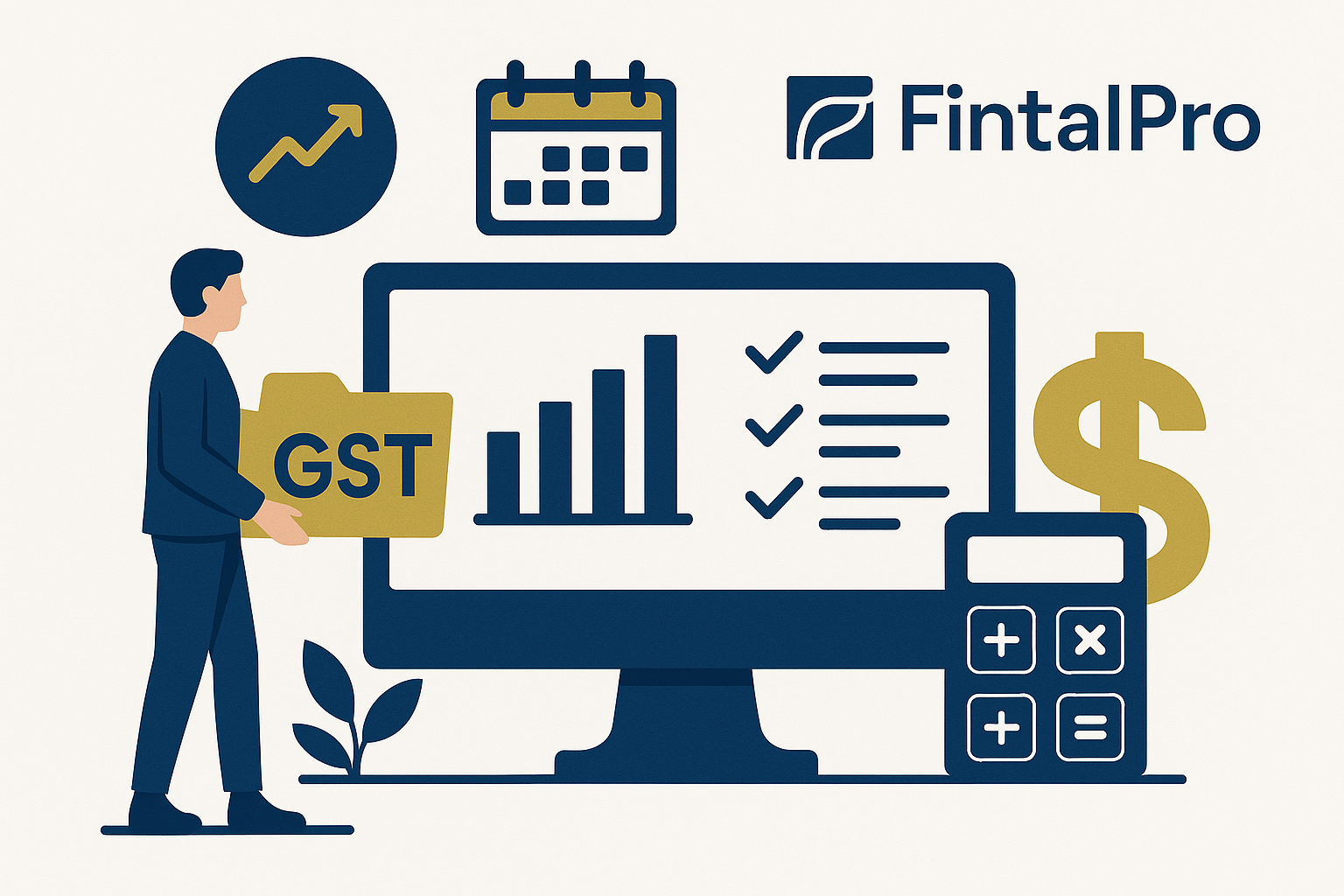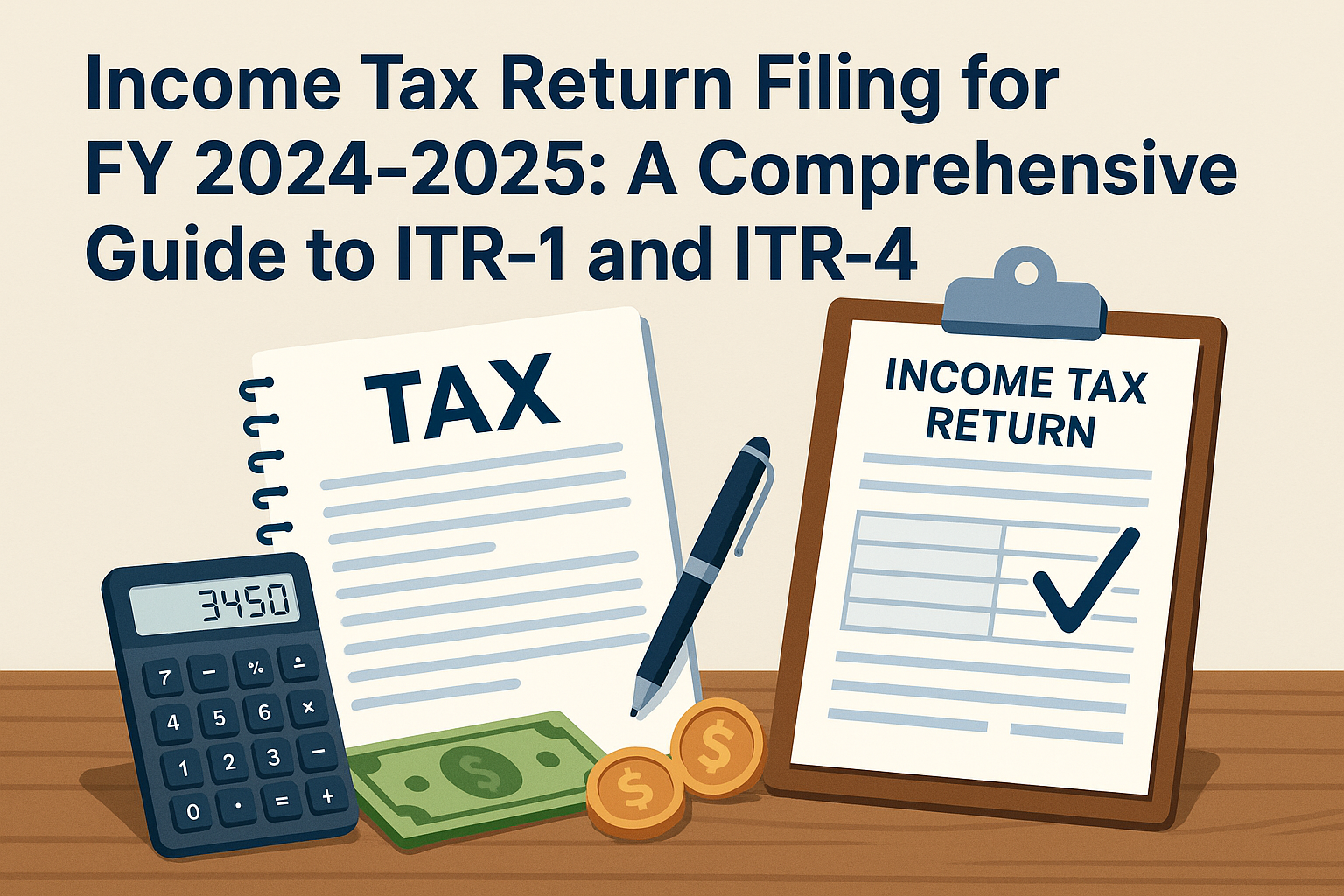
Essential Guide for Accountants and Tax Professionals
The Indian taxation landscape is witnessing significant changes with new GST filing rules. These modifications will impact how accountants, tax professionals, and businesses handle their GST compliance from July 2025 onwards.
🔄 Major Changes in GST Filing Rules
Auto-Population Lock for GSTR-3B Forms
Starting from July 2025, the GST Council has introduced stringent measures to enhance compliance accuracy. The GSTR-3B form will become non-editable once tax details are auto-populated from GSTR-1 data.
This change represents a fundamental shift in how businesses manage their GST returns. Previously, taxpayers could manually adjust figures in GSTR-3B. Now, all corrections must be made through GSTR-1A before filing GSTR-3B.
Key Impact Areas:
- Enhanced data integrity between GSTR-1 and GSTR-3B
- Reduced revenue leakages from mismatched entries
- Improved transparency in tax compliance
Three-Year Deadline Implementation
The GST Council has established a three-year time limit for filing overdue returns. This applies to all GST return forms including GSTR-1, 3B, 4, 5, 5A, 6, 7, 8, and 9.
Timeline Details:
- Effective date: July 1, 2025
- Coverage: All GST return forms
- Exceptions: Require special GST Council recommendation

📊 Detailed Analysis of New GST Compliance Rules
GSTR-3B Lock Mechanism
| Aspect | Previous Process | New Process (July 2025) |
|---|---|---|
| Form Editing | Manual editing allowed | Auto-populated data locked |
| Corrections | Direct in GSTR-3B | Only via GSTR-1A |
| Frequency | Unlimited changes | One correction per period |
| Reverse Charge | Manual entry | Still permitted manually |
Return Filing Deadlines
The three-year deadline creates urgency for businesses with pending returns. Here’s how it affects different stakeholders:
For Accountants:
- Review client portfolios for overdue returns
- Prioritize filings before June 30, 2025
- Implement systematic tracking systems
For Businesses:
- Conduct compliance audits
- Clear historical backlogs
- Establish preventive measures
🎯 Strategic Compliance Approach
Early Filing Strategy
Accurate and timely GSTR-1 filing becomes crucial under new rules. Since GSTR-3B will auto-populate from GSTR-1 data, errors in the initial filing cascade through the entire process.
Best Practices:
- File GSTR-1 by the 10th of each month
- Conduct thorough data verification
- Implement automated validation checks
Error Correction Protocol
The new GSTR-1A correction mechanism requires careful planning. Only one correction per tax period is allowed, making accuracy paramount.
Implementation Steps:
- Identify discrepancies early
- Prepare comprehensive correction data
- File GSTR-1A before GSTR-3B deadline
- Verify auto-population accuracy
💼 Real-World Implementation Examples
Case Study 1: Manufacturing Company
A Delhi-based manufacturing firm with monthly turnover of ₹5 crores faced challenges with the new rules. They implemented the following strategy:
Problem: Historical data inconsistencies between GSTR-1 and GSTR-3B
Solution: Comprehensive data reconciliation using professional accounting software
Result: 95% reduction in filing errors within three months
Case Study 2: Service Provider
A Patna-based IT services company struggled with reverse charge compliance under new rules.
Challenge: Manual reverse charge entries in locked GSTR-3B
Approach: Segregated reverse charge transactions for separate processing
Outcome: Streamlined compliance process with zero penalties
📱 Leveraging FintalPro for GST Compliance
FintalPro App offers comprehensive solutions for managing GST compliance under new rules. The platform integrates seamlessly with existing accounting systems to ensure accurate data flow.
Key Features:
- Automated GSTR-1 validation
- Real-time error detection
- Compliance deadline tracking
- Professional tax consultation
FintalPro simplifies complex GST processes for both personal and business requirements. The platform’s user-friendly interface makes it accessible for accountants managing multiple client portfolios.
🔍 Compliance Strategies
Local Market Considerations
Businesses in India, particularly in tier-2 cities like Patna, face unique challenges with GST compliance. Local tax consultants and accounting firms must adapt their service offerings to meet new requirements.
Regional Compliance Factors:
- Local business culture adaptation
- Language-specific documentation
- Regional tax authority preferences
Social Media Integration
Modern accounting practices leverage social media platforms for client communication and compliance updates. Regular updates about GST changes help maintain client relationships and demonstrate professional expertise.
📈 Long-Term Impact Assessment
Revenue Administration Benefits
The GST Council’s initiatives aim to strengthen revenue collection through improved compliance mechanisms. These changes will likely result in:
- Reduced tax evasion opportunities
- Enhanced audit trail capabilities
- Improved data analytics for policy decisions
Business Adaptation Requirements
Organizations must invest in robust accounting systems and professional training to navigate new compliance requirements effectively.
Investment Areas:
- Advanced accounting software
- Staff training programs
- Professional consultation services
⚡ Action Items for Immediate Implementation
For Accounting Professionals
- Audit Client Portfolios: Review all pending returns before June 30, 2025
- System Upgrades: Implement software capable of handling new requirements
- Training Programs: Educate staff on GSTR-1A procedures
- Client Communication: Inform clients about upcoming changes
For Businesses
- Compliance Review: Assess current GST filing practices
- Process Documentation: Create standardized procedures for new requirements
- Technology Integration: Adopt compatible accounting solutions
- Professional Support: Engage qualified tax consultants

📚 Additional Resources and References
For comprehensive understanding of GST compliance requirements, refer to the official GST Council notifications and guidelines available on the GST Portal.
The Ministry of Finance provides detailed explanations of policy changes and their implementation timelines.
Tax professionals can access training materials and certification programs through the Institute of Chartered Accountants of India.
🎯 Conclusion
The July 2025 GST filing rule changes represent a significant evolution in India’s tax compliance landscape. Success depends on proactive preparation, accurate data management, and strategic use of professional tools like FintalPro.
Accountants and tax professionals must embrace these changes as opportunities to enhance service quality and demonstrate professional expertise. The new rules ultimately benefit the entire ecosystem by promoting transparency and reducing compliance complexities.
Key Takeaways:
- Early preparation prevents compliance issues
- Accurate GSTR-1 filing becomes critical
- Professional tools enhance success rates
- Continuous learning ensures long-term adaptability
The transformation of GST compliance rules demands immediate attention and strategic planning. Organizations that adapt quickly will gain competitive advantages while maintaining regulatory compliance.
This article provides general guidance on GST compliance changes. For specific business situations, consult qualified tax professionals or use comprehensive platforms like FintalPro for personalized solutions.
Related Posts

You Can Still Avoid AED 10,000 Corporate Tax Penalty in UAE
— Even if You Haven’t Registered Yet! 💡 If you’re a business owner in the UAE who hasn’t registered for Corporate Tax yet, here’s some…
Read More
Income Tax Return Filing for FY 2024-2025
A Comprehensive Guide to ITR-1 and ITR-4 🗃️ The Income Tax Department has officially commenced the income tax return (ITR) filing for FY 2024-2025, introducing…
Read More
